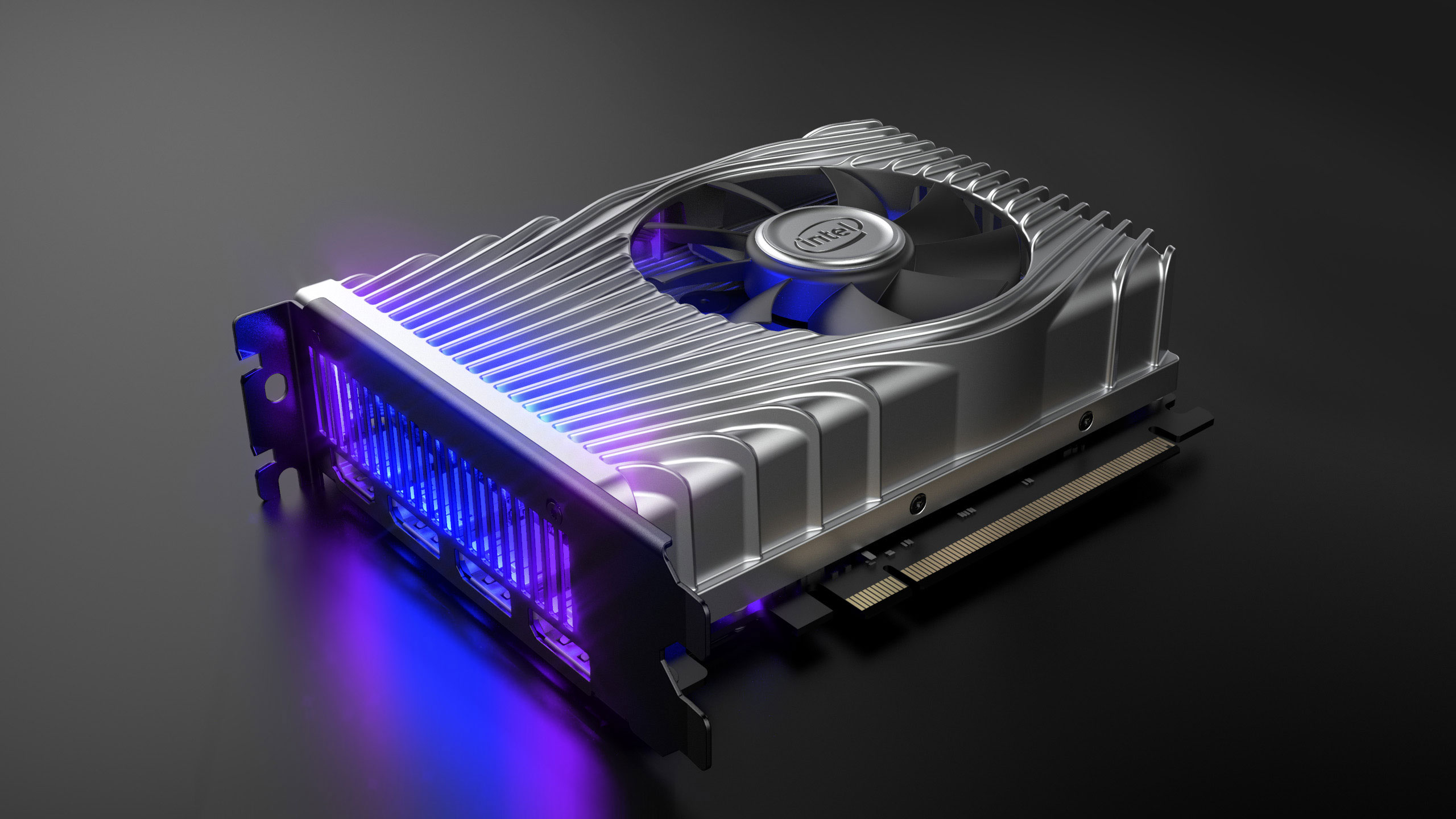Intel Iris Xe Max (DG1) Mobile GPU Listed With Slower-Than-Expected Memory
Acer's first laptop with Xe Max Graphics uses LPDDR4X memory for the dedicated graphics.
In Acer's fall hardware event, it showed off one of the first laptops equipped with Intel's Xe Max Graphics, a dedicated version of Tiger Lake's Xe LP Graphics. There's been plenty of speculation and questions about Xe Max already. Does Xe Max support dual-GPU mode with the integrated Xe LP Graphics? What are the actual specs? With the Acer Swift 3X reveal, we may finally know the latter, or at least some aspects of how dedicated Xe Graphics can be configured.
Intel originally showed off its Xe DG1 test vehicle at CES 2020 back in January. Since then, it's been confirmed that the Xe DG1 card has 96 EUs and 3GB of GDDR6 memory running at 12 Gbps. Many assumed the DG1 in laptops would have the same configuration, but it appears the chip can be configured with different memory solutions. Specifically, the Acer Swift 3X has 4GB of LPDDR4X just for the dedicated graphics. That's … interesting.
The DG1 test vehicle comes with a 96-bit memory interface and 12 Gbps GDDR6 memory. That provides 144 GBps of memory bandwidth. The Acer laptop by comparison appears to use a 64-bit memory interface running at just 4.267 Gbps, which would yield a mere 34.1 GBps of bandwidth. That's quite the drop and would almost certainly lower performance. It would also cost less. Here's the pertinent quote from the Acer Swift 3X battery testing:
"Battery life test configuration: 11th Gen Intel Core i5-1135G7 @ 2.4GHz, Intel Iris Xe Max, FHD, SSD only, 8GB of LPDDR4X memory, 4GB of LPDDR4X VRAM."

Based on what we know of the DG1 test vehicle, it looks like Intel's DG1 can be configured to use at least GDDR6 or LPDDR4X, and possibly other memory variants as well. For laptop use, it does make some sense to stick with lower power LPDDR4X, but we have to wonder what that will do for performance.
One third the memory bandwidth can't possibly help, but it does potentially make dual-GPU / hybrid solutions where the integrated Xe LP and dedicated Xe LP clusters work together less troublesome. Considering the 96 EU Xe LP GPU, it might not even need that much more memory bandwidth. All GPUs eventually reach a point where more memory bandwidth doesn't help, and 34.1 GBps might be 'enough' for the laptop DG1.
On the other hand, it's important to note that Intel has positioned DG1 as a competitor to chips like Nvidia's MX350. That chip has 640 CUDA cores running at 1.47 GHz, giving it 1,882 GFLOPS of FP32 performance. The DG1's 96 EUs running at 1.55 GHz meanwhile has a theoretical compute performance of 2,381 GFLOPS. That's 25% more performance than the MX350 (though nowhere near the MX450's 3,226 GFLOPS). But the MX350 doesn't use LPDDR4X. Instead, it has a 64-bit GDDR5 7 Gbps configuration with 56 GBps of bandwidth.
Basically, Nvidia currently offers slightly lower (theoretical) compute performance with significantly higher memory bandwidth than the Iris Xe Max in the Acer Swift. Both chips would also operate in the 15-20W TDP range, but Nvidia's experience in the GPU market suggests MX350 might still come out on top.
Get Tom's Hardware's best news and in-depth reviews, straight to your inbox.
There's still the wildcard of hybrid graphics, of course. Two Xe LP configurations, both running at 1.3 GHz, would have nearly 4 TFLOPS of computational performance. They would also have around 68 GBps of combined bandwidth. But then Intel still needs to figure out how to make multi-GPU work well, something even Nvidia has backed away from these days.

Jarred Walton is a senior editor at Tom's Hardware focusing on everything GPU. He has been working as a tech journalist since 2004, writing for AnandTech, Maximum PC, and PC Gamer. From the first S3 Virge '3D decelerators' to today's GPUs, Jarred keeps up with all the latest graphics trends and is the one to ask about game performance.
-
JayNor While the discrete GPU might not improve much for gaming, I wonder what the additional GPU will add as a second math or ai co-processor in Intel's oneAPI.Reply